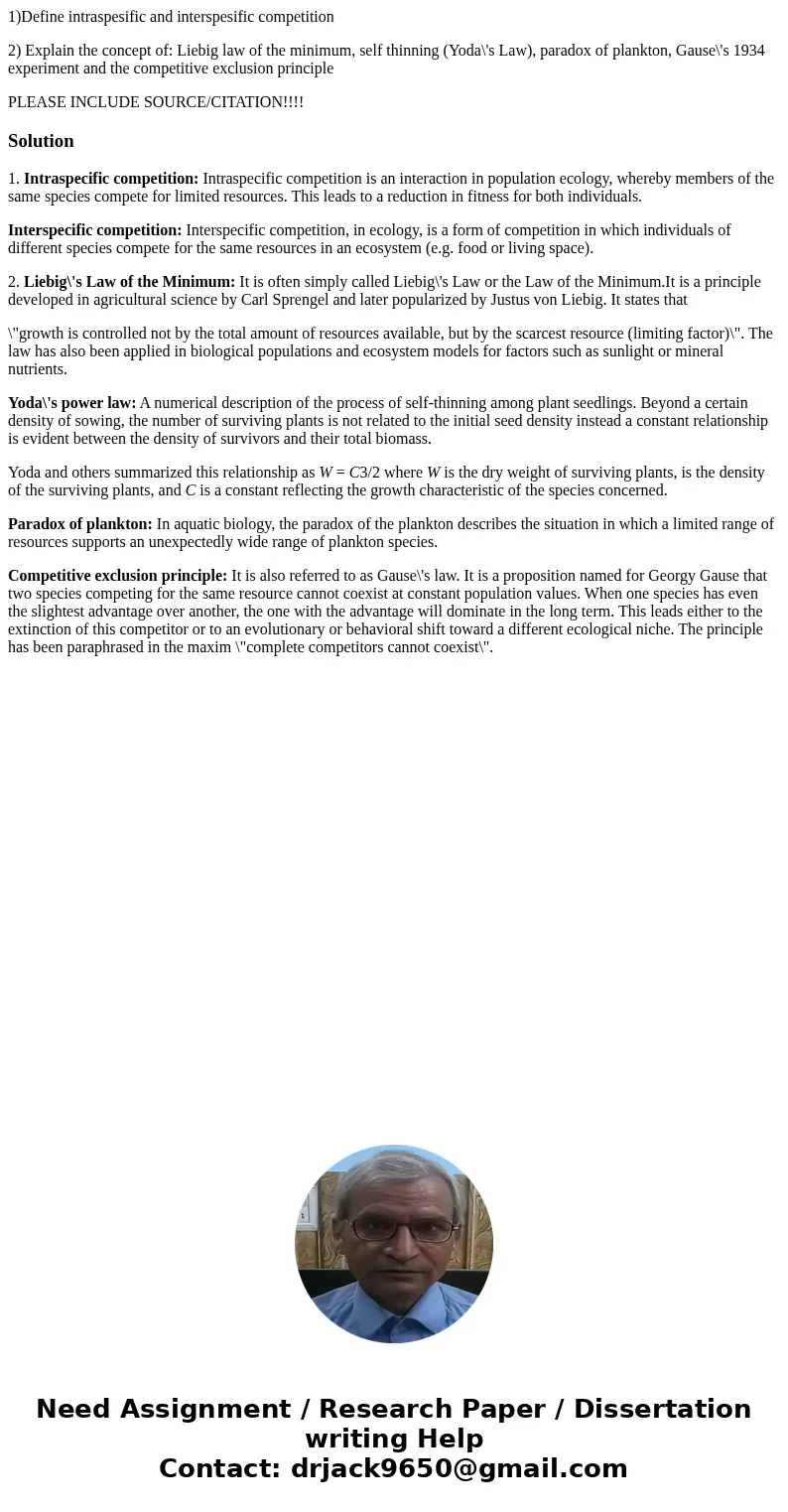1Define intraspesific and interspesific competition 2 Explai
1)Define intraspesific and interspesific competition
2) Explain the concept of: Liebig law of the minimum, self thinning (Yoda\'s Law), paradox of plankton, Gause\'s 1934 experiment and the competitive exclusion principle
PLEASE INCLUDE SOURCE/CITATION!!!!
Solution
1. Intraspecific competition: Intraspecific competition is an interaction in population ecology, whereby members of the same species compete for limited resources. This leads to a reduction in fitness for both individuals.
Interspecific competition: Interspecific competition, in ecology, is a form of competition in which individuals of different species compete for the same resources in an ecosystem (e.g. food or living space).
2. Liebig\'s Law of the Minimum: It is often simply called Liebig\'s Law or the Law of the Minimum.It is a principle developed in agricultural science by Carl Sprengel and later popularized by Justus von Liebig. It states that
\"growth is controlled not by the total amount of resources available, but by the scarcest resource (limiting factor)\". The law has also been applied in biological populations and ecosystem models for factors such as sunlight or mineral nutrients.
Yoda\'s power law: A numerical description of the process of self-thinning among plant seedlings. Beyond a certain density of sowing, the number of surviving plants is not related to the initial seed density instead a constant relationship is evident between the density of survivors and their total biomass.
Yoda and others summarized this relationship as W = C3/2 where W is the dry weight of surviving plants, is the density of the surviving plants, and C is a constant reflecting the growth characteristic of the species concerned.
Paradox of plankton: In aquatic biology, the paradox of the plankton describes the situation in which a limited range of resources supports an unexpectedly wide range of plankton species.
Competitive exclusion principle: It is also referred to as Gause\'s law. It is a proposition named for Georgy Gause that two species competing for the same resource cannot coexist at constant population values. When one species has even the slightest advantage over another, the one with the advantage will dominate in the long term. This leads either to the extinction of this competitor or to an evolutionary or behavioral shift toward a different ecological niche. The principle has been paraphrased in the maxim \"complete competitors cannot coexist\".

 Homework Sourse
Homework Sourse